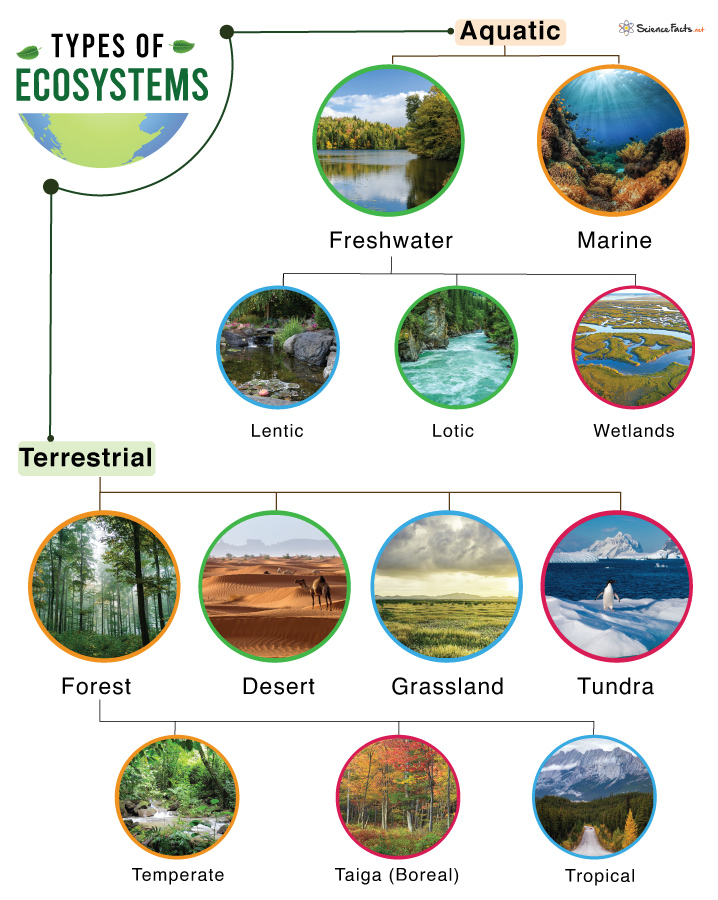Types of Ecosystem
Key Notes:

- Definition of Ecosystem: An ecosystem is a community of living organisms (plants, animals, and microorganisms) interacting with their physical environment (such as air, water, and soil).
- Terrestrial Ecosystems:
- Forest Ecosystems: These include tropical rainforests, temperate forests, and boreal forests, each with its unique flora and fauna.
- Grassland Ecosystems: These include prairies, savannas, and steppes, characterized by grasses as the dominant vegetation.
- Desert Ecosystems: Found in arid regions, deserts have minimal rainfall and are home to specially adapted plants and animals.
- Aquatic Ecosystems:
- Marine Ecosystems: These are found in saltwater bodies like oceans and seas, and they house a wide variety of marine life, including fish, whales, and coral reefs.
- Freshwater Ecosystems: These are found in bodies of freshwater such as lakes, rivers, and ponds. They support different species like fish, amphibians, and aquatic plants.
- Artificial Ecosystems:
- Urban Ecosystems: Human-made environments like cities and towns that have their own unique ecosystems with wildlife, plants, and human influence.
- Agricultural Ecosystems: Farms and agricultural areas are modified ecosystems where humans cultivate crops and raise livestock.
- Specialized Ecosystems:
- Mountain Ecosystems: Found at high altitudes, mountain ecosystems have unique species adapted to cold and harsh conditions.
- Wetland Ecosystems: These include marshes, swamps, and bogs, and are characterized by waterlogged soil and diverse plant and animal life.
- Coral Reef Ecosystems: Found in warm, shallow waters, coral reefs are diverse and support countless marine species.
- Aquatic vs. Terrestrial: Aquatic ecosystems are those in water bodies, while terrestrial ecosystems are on land.
- Natural vs. Artificial: Natural ecosystems exist without human intervention, while artificial ecosystems are influenced or created by human activities.
- Biodiversity: Ecosystems can vary in biodiversity, with some having a wide variety of species and others being less diverse.
- Interdependence: Within ecosystems, organisms rely on each other for food, shelter, and other resources. This interconnectedness is crucial for the ecosystem’s balance.
- Environmental Threats: Ecosystems can be threatened by factors like pollution, habitat destruction, climate change, and invasive species. Students should learn the importance of conservation and protecting ecosystems.
- Ecosystem Services: Ecosystems provide essential services to humans, including clean air, water purification, and food production. Understanding these services highlights the importance of preserving ecosystems.
- Local Ecosystems: Encourage students to observe and study the ecosystems in their local environment, such as parks, forests, or bodies of water. This can foster a deeper connection to nature.
Let’s practice!

